It’s an important question to ask when shopping for a jacket: how long do jackets last? Whether you’re looking at leather, synthetic nylon and polyester or cotton, the lifespan of your purchase depends on several factors.
In general, a well-made jacket made of durable materials such as leather, cotton or heavy-duty nylon can easily last for 10-20 years, while cheaper jacket made of low quality materials may only last for a season or two with heavy usage.
How much you use your jacket and for what greatly impact its lifespan. The way you store it is also an important factor.
For example, storing your jacket in a cool, dry place and protecting it from too harsh weather conditions can help it last longer.
Additionally, regularly cleaning and maintaining your jacket, such as by washing it or having it dry cleaned, can help to extend its lifespan – But the optimal frequency of washing varies widely and depends on the type of jacket.
We will go through each type of jacket in this post.
Quality materials are essential for durability but proper care is also key. Knowing what signs of wear and tear to look out for can help extend the life expectancy of any type of jacket from down coats with GoreTex membranes to PU coated rainwear.
In very general terms, the table below shows the minimum lifespan expected from different types of jackets:
| Jacket Type | Seasons Most Suitable | Made from | Min. Lifespan |
|---|---|---|---|
| Cashmere wrap coat | Fall, Winter | Cashmere | 3-5 Years |
| Puffer jacket | Winter | Down/synthetic insulation, polyester/nylon | 2-5 Years |
| Biker jacket | Fall, Winter | Leather | 5-10 Years |
| Chore coat | All-Season | Cotton, Canvas | 6-8 Years |
| Parka | Winter | Down/synthetic insulation. Cotton/nylon | 3-5 Years |
| Pea coat | Fall, Winter | Wool | 3-5 Years |
| Trench coat | Spring, Fall | Cotton, Polyester, Wool | 5-7 Years |
| Bomber jacket | Fall, Winter | Polyester, Nylon | 4-6 Years |
| Denim jacket | All-Season | Denim | 7-10 Years |
| Leather jacket | Fall, Winter | Leather | 5-10 Years |
| Field jacket | Fall, Winter | Cotton, Nylon | 5-7 Years |
| Rain jacket | Spring, Summer | Polyester, Nylon | 2-3 Years |
| Down jacket | Winter | Down, nylon, cotton | 2-5 Years |
| Anorak | Winter | Nylon, Polyester | 3-5 Years |
| Windbreaker | Spring, Fall, Summer | Polyester, Nylon | 2-3 Years |
| Fleece jacket | Fall, Winter | Polyester, Nylon | 2-3 Years |
| Ski jacket | Winter | Polyester, Nylon | 4-6 Years |
| Softshell jacket | Fall, Winter | Polyester, Nylon | 3-5 Years |
| Quilted jacket | Fall, Winter | Polyester, Nylon, down | 2-3 Years |
| Military jacket | Fall, Winter | Cotton, Nylon | 5-10 Years |
We’ll explore types of jackets, their longevity factors as well as tips on replacement in this blog post so that you can make an informed decision before buying.
Contents
What Determines A Jackets Life Span?
When it comes to the durability of a jacket, there are several factors that come into play.
The quality of materials used is one of the most important considerations when selecting a jacket for outdoor activities such as hiking or camping.
A High-quality down jacket, for example, can last up to 10 years if properly cared for and maintained. But jackets without down or other insulation and a thick outer layer can last much longer.
Cotton jackets may be less durable than synthetic fabrics like nylon and polyester, but they do not break in the same detrimental way as nylon and polyester does.

A worn out cotton jacket can still be fashionable – even with holes in it!
Leather jackets are also popular among hikers and campers due to their water resistance and durability; however, they require more care and maintenance than other types of outerwear.
So what are the most important things to keep in mind when thinking about the life span of a jacket?
I’ll explain below!
The frequency of use
This is perhaps the most important factor that affects the longevity of a jacket. Jackets (especially those made from materials such as leather) will last longer if worn only occasionally rather than on a daily basis because these materials take longer to break down over time with frequent wear and tear.
In general, the more you wear a jacket the shorter it lasts. Usage is the single most important variable in your control when it comes to jacket lifespan.
Lighter weight shells with waterproof membranes such as GoreTex or PU coated rain jackets may need replacing sooner due to their thinner construction which makes them more susceptible to damage from abrasion or punctures caused by sharp objects like rocks or branches while out on trails.
GoreTex and other membrane jackets will lose their functionality quicker if you use them a lot. If they get dirty and sweaty that decreases their lifespan even further.
Unless… You take proper care of them!
Care & maintenance
How you are treating your jacket also play an important role in the life span of any type of jacket regardless its material composition or intended purpose.
The better you care for your jacket, the longer it will last.
Regularly cleaning your outerwear according to manufacturer instructions helps keep dirt at bay which can cause fabric fibers weaken over time leading premature breakdowns in performance.
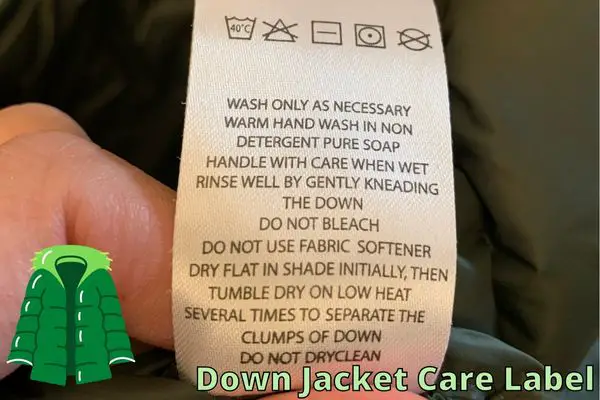
This goes for features like breathability or waterproofing capabilities found in some models designed specifically for outdoor activities like skiing or snowboarding where exposure elements could become extreme at times during winter months especially when temperatures drop below freezing point level (0°C).
Down jackets are especially demanding when it comes to washing and drying as they will need special treatment to keep their fluff.
Storage conditions
Storing your gear away from direct sunlight whenever possible helps prevent fading colors due excessive UV rays exposure which could lead discoloration issues eventually affecting overall look.
Even though this does not necessarily impact functionality directly it is still worth mentioning here nonetheless since visual appeal often matters to subjective longevity of a jacket (some people throw away a jacket after a tiny scratch or stain).
Finally, wear and tear should always be taken seriously so you know when exactly to replace your current piece with something new before things get worse potentially putting yourself in a dangerous situation outdoors.
Durability factors such as the type of fabric, construction, and care all play a role in determining how long your jacket will last.
Key Takeaway: The longevity of a jacket depends on its material quality, how you use it, frequency of use, and care & maintenance practices.
What Are The Different Types of Jackets?
When it comes to durability and longevity of a jacket, the type and materials used play a significant role.
Down jackets, for example, are popular among hikers and outdoor enthusiasts for their lightweight construction and superior insulation, but down jackets do not provide much waterproof protection.
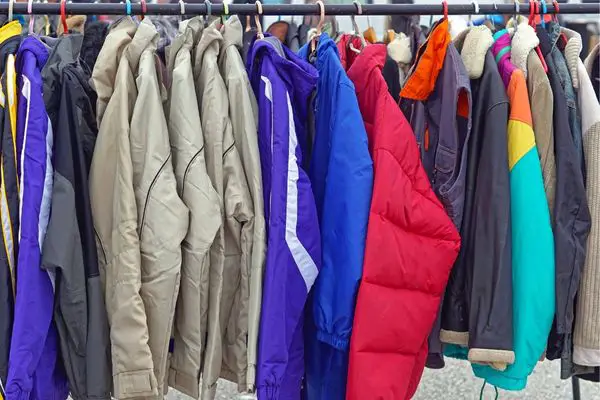
This means that if you plan on being out in wet conditions, a down jacket should be paired with an outer shell layer.
On the other hand, cotton jackets are breathable and comfortable against the skin, but they don’t offer much insulation unless layered with other materials and they take a long time to dry, making them less suitable for damp climates or strenuous activities.
Down jackets
Down jackets, including puffer jackets, are a popular choice for hikers and outdoor enthusiasts due to their lightweight construction, superior insulation, and packability.
Down is the lightest insulating material available (insulating at least 20% more than polyester insulation), making it ideal for cold weather activities like skiing or snowshoeing.
It also compresses easily into small spaces when not in use. However, down does not provide any waterproof protection so it should be paired with an outer shell layer if you plan on being out in wet conditions.
Cotton jackets
Jackets made from cotton are another common option for those looking to stay warm while outdoors.
Cotton is breathable and comfortable against the skin but doesn’t offer much insulation unless layered with other materials such as fleece or wool.
While cotton can absorb moisture from sweat or rain, it takes a long time to dry which makes it less than ideal in damp climates or during strenuous activities where you may perspire heavily.
Leather jackets
Jackets made from leather have been around since ancient times and remain popular today thanks to their timeless style and durability.
Leather is water-resistant but will eventually become saturated if exposed to prolonged periods of rain or snowfall.
However this usually takes several hours before saturation occurs so leather can still be used as an effective outer layer in milder weather conditions without fear of getting soaked through quickly.
Leather also offers excellent wind resistance which helps keep body heat trapped inside the jacket even when temperatures drop significantly outside.
Synthetic nylon and polyester jackets
Synthetic are becoming increasingly popular among hikers due to their affordability, versatility, and ability to repel water effectively without sacrificing breathability like traditional waterproof fabrics do (such as GoreTex).
Nylon/polyester blends tend to be more durable than pure cotton options yet still maintain a soft feel against your skin that won’t irritate after extended wear periods like some heavier materials might do (like denim).
Synthetic fabrics also tend to dry faster than natural fibers such as wool or cotton so they’re great for those who want quick drying performance while out on the trail too!
Shell jackets
Shell jackets usually have membrane like GoreTex and are designed specifically for extreme weather conditions such as heavy rains or blizzards, where keeping your core temperature regulated is essential.
These types of shells typically feature taped seams along all edges that prevent moisture from seeping through any weak points in the fabric itself, thus providing superior waterproof protection compared to other types of outerwear garments available today (including PU coated rain jackets).
Shells with Gore-Tex membranes come at a premium price point but they offer unparalleled levels of comfort and protection when faced with harsh environmental elements, making them well worth investing in if you plan on spending extended amounts of time outdoors.
From lightweight rain shells to heavy duty down jackets, there is a wide variety of types of jackets available for outdoor activities. Next, let’s look at how long these different types of jackets last.
Key Takeaway: Down jackets offer superior insulation and packability but no waterproof protection; cotton is breathable and comfortable against the skin; leather is water-resistant and offers excellent wind resistance; synthetic nylonpolyester blends are durable yet soft, quick-drying, and repel water effectively; shell jackets with GoreTex membranes provide unparalleled levels of comfort and protection in extreme weather conditions. Ultimately, the best option will depend on what you plan to do outdoors as well as budget considerations.
Care & Maintenance
It’s important to take good care of your jackets in order to extend their life. Cleaning them regularly with a mild detergent or soap solution is the best way to keep them looking and performing at their best.
Make sure you store your jacket in a cool, dry place away from direct sunlight when not in use. This will help protect it from fading and discoloration over time.
Using a waterproofing spray on the exterior of your jacket can also be beneficial for keeping water out and maintaining its breathability.
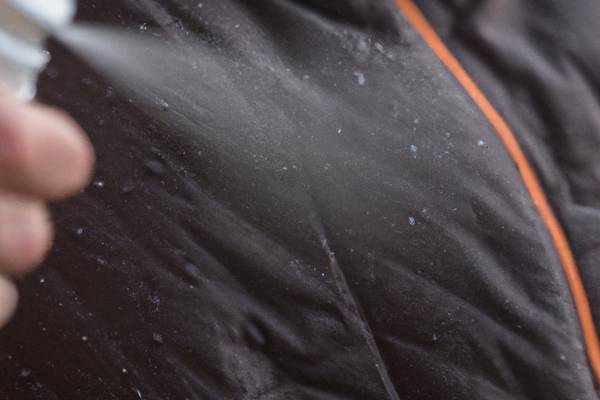
Be sure to apply this spray according to the manufacturer’s instructions for optimal performance and protection against wear-and-tear caused by rain or snowfall.
If you notice any rips or tears, repair them promptly using an appropriate patch kit or other method recommended by the manufacturer so that they don’t worsen over time due to further exposure and activity outdoors.
Additionally, check all zippers, buttons, snaps, drawstrings etc., regularly for signs of wear & tear as these parts may need replacing if they become too worn down after extended use over time.
Finally, consider investing in quality materials such as down jackets made with premium goose feathers and thick 3-layer membrane jackets instead of 2-layer ones.
These are highly durable compared to cotton jackets which tend not to last very long due to their lack of insulation properties when wet.
Synthetic nylon and polyester fabrics are also popular choices since they offer excellent weatherproofing capabilities while remaining lightweight enough for comfortable outdoor activities like hiking or camping trips where weight is an issue.
Proper care and maintenance can help extend the life of your jacket, so be sure to follow the manufacturer’s instructions for cleaning and storage. Next, we’ll look at how often you should replace your jacket.
Key Takeaway: It is important to take care of your jackets in order to extend their life. This includes cleaning them regularly, storing them in a cool dry place away from direct sunlight, using waterproofing spray on the exterior and repairing any rips or tears promptly. Additionally, consider investing in quality materials such as down jackets made with premium goose feathers for maximum durability and insulation when wet.
How Long Do Waterproof Jackets Last?
When it comes to waterproof jackets, one of the most important questions you should ask yourself is: How long will this jacket stay waterproof?
After all, you’re buying one to keep you dry when it rains and the time factor should be a crucial part of your decision.
On average, a waterproof jacket lasts for 3-5 years depending on how often it is worn, under what conditions and how well it is taken care of.
Shell jackets last shorter than old-fashioned polyurethane or rubber jackets, and pure nylon or polyester rain gear lasts somewhere in between.
If you wear your jacket frequently or expose it to harsh weather conditions, then re-proofing may be necessary every few months.

If you take good care of your raincoat and don’t wear if every day, then expect 5 to 10 years out of it.
Many companies also offer lifetime warranties so that they can repair or replace your coat free of charge if its impermeability level fails over time.
It’s also worth noting that different materials have different levels of water resistance; some fabrics are more resistant than others while some are designed specifically for extreme weather conditions such as snowstorms or heavy downpours.
So make sure to read the label carefully before making any purchasing decisions in order to get the best value for money from your purchase.
Finally, remember that even with proper maintenance and care there are still external factors which could affect the longevity of your raincoat such as living in an area where heavy rains occur regularly – these would require more frequent re-proofing sessions in order for them to remain effective against moisture intrusion over time.
How Long Would You Expect a Winter Coat to Last?
Winter coats are an essential piece of clothing for any outdoor enthusiast. Whether you’re a hiker, camper or just someone who enjoys the outdoors, having a reliable winter coat is key to staying warm and comfortable in cold weather conditions.
But how long should you expect your winter coat to last?
Generally speaking, if taken care of properly, a good quality winter coat can last anywhere from 3-10 years depending on its use.
A jacket will last shorter if it contains down and more if it is made from thick cotton with synthetic insulation.

But of course it does depend on several factors including the quality of the material used, how often it’s worn and what type of activities it’s used for.
Winter jackets usually last longer than most windbreakers because they are only used in winter, but winter jackets are also more complex, often with down filling, and are subjected to more wet and harsh weather conditions.
If you plan on using your coat regularly in harsh conditions such as snow or rain then it may not last as long as one that is only occasionally worn in milder temperatures.
When shopping for a new winter coat make sure to check out the materials used and look at reviews from other customers who have purchased similar items before making your purchase.
High-quality fabrics like wool or down will usually be more expensive but they will also provide better insulation and durability than cheaper alternatives like polyester or nylon which tend to wear out faster over time due to their lack of breathability and water resistance properties.
It’s also important to take proper care when storing your winter jacket between uses by hanging it up rather than folding it away so that wrinkles don’t form which could reduce its lifespan significantly over time.
Additionally, avoid washing too frequently since this can cause fabric fibers to break down leading them become less effective at keeping you warm when needed most during cold weather months ahead!
How long do down jackets last?
Down jackets are an excellent choice for outdoor enthusiasts due to their lightweight and insulating properties. Generally, down jackets can last anywhere from 3-5 years depending on the quality of the jacket and how often it is used.
Regular maintenance such as washing and drying with a low heat setting will help extend its life. Additionally, storing your down jacket in a dry place away from direct sunlight will also increase its longevity. With proper care, you can enjoy your down jacket for many years to come!
Synthetic vs. Down Insulation
When it comes to insulation, there are some distinct differences between synthetic and down-filled options.
Down is considerably warmer for its weight and compresses into a smaller package, but synthetic filling lasts longer and is easier to care for.
However, if you get caught in the rain for an extended period of time, the average down jacket will lose its loft and become soggy. Synthetics retain their puffiness even in wet conditions and stand up better to punctures.
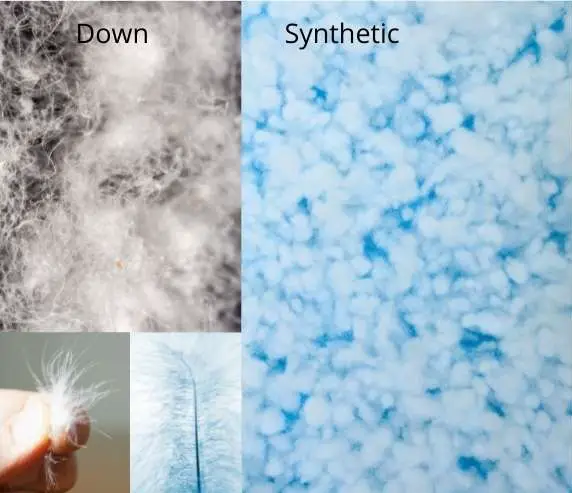
While synthetics cost less initially, they insulate less than down garments but will likely last longer with proper care.
Polyester filling has a longer lifespan than synthetics due to its ability to maintain loft after hundreds of compressions over time.
On the other hand, stuffing a down jacket into your pack repeatedly can reduce total loft and warmth significantly over time.
It’s important to consider both types when selecting insulation for outdoor activities such as hiking or camping – depending on your needs one might be more suitable than the other!
How long do leather jackets last?
Leather jackets are a timeless wardrobe staple and can last for many years with proper care. While the lifespan of a leather jacket depends on its quality, most high-quality leather jackets will last at least 10 years if taken good care of.
The durability of a leather jacket is determined by several factors such as the type of hide used, the tanning process employed, and how it was treated during manufacturing.

The best quality hides come from cattle that have been grass fed and free range raised in colder climates where their skin has thickened to protect them from extreme temperatures.
These hides are then tanned using natural processes which add strength and flexibility to the material while preserving its natural oils.
Finally, they’re treated with waxes or other protective agents to help keep them soft and supple over time.
When cared for properly, these jackets can easily last more than 10 years without showing signs of wear or tear.
To ensure your leather jacket lasts as long as possible you should avoid exposing it to direct sunlight or excessive heat sources like radiators or open fires; both can cause discoloration over time due to fading caused by UV rays breaking down the dyes in the hide’s surface layer.
Additionally, you should never store your leather jacket in an airtight container since this could lead to mold growth due to moisture buildup inside the container itself.
Instead opt for breathable garment bags made specifically for storing garments like coats and suits so that air can circulate freely around your garment while still protecting it from dust particles settling on its surface when not being worn regularly .
To clean your leather jacket use only mild detergents designed specifically for cleaning delicate fabrics such as suede cleaners which won’t damage any part of the material but instead help remove dirt build up without damaging any part of its construction including seams , zippers , buttons etc.
If necessary spot treat stains using a damp cloth dabbed lightly into some mild soap solution before wiping away gently . When drying hang up your coat somewhere cool out of direct sunlight until completely dry before storing again .
In terms of maintenance regular conditioning is also important if you want your jacket looking new year after year – apply conditioners formulated especially for use on fine leathers every few months depending on how often you wear it.
These products contain nourishing ingredients that replenish lost oils helping keep all parts flexible while preventing cracking & splitting along seams & edges which would otherwise shorten its lifespan significantly .

Finally, be sure to check regularly for signs indicating wear and tear such as fraying along hems, broken threads near pockets, and zipper pulls coming loose. If found, replace immediately rather than waiting till further damage occurs since this will save money in repair costs later down the line.
Leather jackets can last for many years with proper care and maintenance, so it’s important to know how to properly store and maintain your jacket in order to extend its life. Next, we’ll look at the different factors that affect how long a leather jacket lasts.
Key Takeaway: Leather jackets are a timeless wardrobe staple that can last for many years with proper care. To ensure the longevity of your leather jacket, take good care to avoid exposing it to direct sunlight or excessive heat sources; store in breathable garment bags; clean with mild detergents and conditioners specifically made for delicate fabrics; and regularly check for signs of wear and tear.
How Long Do Motorcycle Jackets Last?
Motorcycle jackets are an essential part of any biker’s wardrobe. They not only look great, but they also provide protection from the elements and other hazards on the road.
But how long do motorcycle jackets last? On average, a good quality motorcycle jacket can last anywhere from 5 to 10 years depending on several factors.
The type of material is one of the most important factors in determining how long your jacket will last.

Leather is by far the most durable material for motorcycle jackets, but it requires regular maintenance to keep it looking its best and lasting as long as possible.
Synthetic materials such as nylon or polyester are less expensive than leather, but they don’t usually hold up quite as well over time.
How often you wear your jacket also affects its lifespan. If you’re using it every day for commuting or touring, then you’ll need to replace it more frequently than if you only use it occasionally for weekend rides or shows.
Regular exposure to sun and rain can cause fading and damage that shorten a jacket’s life span significantly if left unchecked.
Finally, proper care and maintenance play a big role in extending the life of your motorcycle jacket too!
Make sure to clean off dirt and grime after each ride with mild soap and water; this will help prevent permanent staining or discoloration over time due to UV rays from sunlight exposure during riding sessions outdoors..
Additionally, store your coat properly when not in use; hang them up rather than folding them away so that wrinkles don’t form prematurely over time which could lead to tearing down the line eventually!
How long do synthetic jackets last?
Synthetic jackets are a popular choice for hikers and outdoor enthusiasts due to their durability, affordability, and lightweight design.
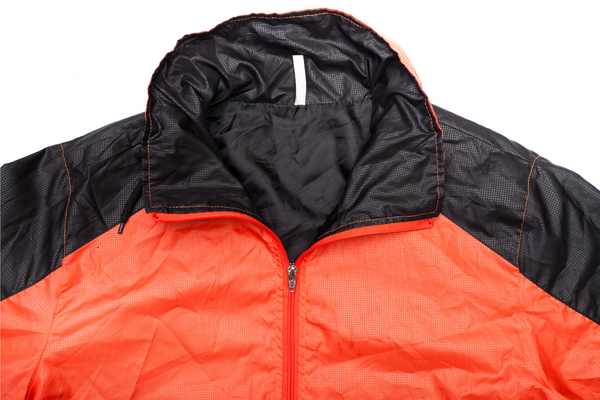
Synthetic jackets are typically made from nylon or polyester fabrics which provide excellent protection against the elements while still allowing for breathability.
Nylon is slightly more tear-resistant than polyester but polyester offers better wear resistance over time.
A good nylon jacket can easily last 5 to 10 years and a polyester jacket made from thick polyester can last up to 20 years.
The thickness of the fabric also plays an important role in determining how long your synthetic jacket will last; thicker fabrics tend to be more durable than thinner ones.
On average, you can expect a thin single-layer synthetic jacket to last anywhere from two to five years depending on its usage and care routine.
When it comes to caring for your synthetic jacket, proper storage and thoughtful usage is key!
Make sure that you store your jacket in a cool dry place away from direct sunlight as this can cause fading and discoloration over time.
Additionally, avoid washing your synthetic jacket too often as this can damage the fabric fibers leading to premature wear and tear.
Instead opt for spot cleaning when necessary with mild detergents or soap solutions specifically designed for technical apparel like GoreTex garments or other waterproof membranes such as PU coated rain jackets.
Whereas most windbreakers and thin sports jackets do not have these membranes and are not waterproof, a waterproofing detergent will help increase water resistance and in turn also breathability!
Signs of wear & tear on a synthetic jacket include pilling (small balls of fabric) caused by friction between the fabric fibers, fading/discoloration due to exposure to UV rays or chemicals found in some detergents.
Also holes caused by abrasion against sharp objects like rocks or branches during hikes etc., tears along seams due excessive stretching of the material when worn incorrectly etc.

Finally look out for signs of mold/mildew growth which could indicate improper storage conditions such as dampness in closets, plastic bag etc.
Replacing your old synthetic jacket with a new one doesn’t have to break the bank. Look out for sales at local stores near you where you might find discounts on quality brands such as Patagonia or North Face, among others.
You could also check online retailers who offer great deals throughout the year, including free shipping options if available.
Lastly, don’t forget about second hand shops where you might find gently used items at bargain prices – just make sure they meet all safety standards before making any purchases.
Synthetic jackets are a great choice for outdoor activities and they can last many years if properly cared for. Next, we’ll explore how to care for synthetic jackets to ensure their longevity.
Key Takeaway: Synthetic jackets are a popular choice for hikers and outdoor enthusiasts due to their durability, affordability, and lightweight design. On average they can last anywhere from two to five years depending on usage and care routine. To extend the life of your synthetic jacket, store it in a cool dry place away from direct sunlight, avoid washing too often with mild detergents or soap solutions designed for technical apparel like GoreTex garments, spot clean when necessary, look out for signs of wear & tear such as pillingfadingholes etc., and check second hand shops for gently used items at bargain prices.
How long do fleece jackets last?
Fleece jackets are a popular choice for outdoor enthusiasts, as they provide excellent insulation and comfort.
However, fleece is a type of polyester fabric that can degrade over time if not properly cared for.

To ensure your fleece jacket lasts as long as possible, it’s important to understand how to care for it and recognize signs of wear and tear.
Durability Factors: Fleece jackets are generally quite durable but their lifespan depends on the quality of the material used in construction.
Higher-end fleeces will last longer than cheaper versions due to better stitching techniques and higher-quality materials being used in production. Additionally, factors such as exposure to sunlight or harsh chemicals can also affect the longevity of your fleece jacket.
Care & Maintenance: Proper care is essential when trying to extend the life of any garment including fleece jackets. Always read the manufacturer’s instructions before washing or drying your jacket; some fabrics may require special cleaning methods or products which could damage them if not followed correctly.
In general, handwashing with mild detergent is recommended instead of machine washing since this reduces friction between garments which helps maintain shape and color retention over time.
Air drying is preferred over tumble drying since high temperatures can cause shrinkage or fading colors in certain fabrics like polyester blends found in most fleeces today .
Signs Of Wear & Tear: Over time you may notice signs that indicate your fleece needs replacing such as pilling (small balls forming on surface), fading colors/discoloration from sun exposure , thinning fabric due to excessive stretching , fraying seams caused by repeated use , holes appearing from abrasion etc.
If these signs appear then it’s probably best replace your old one with a new one so you stay warm while out enjoying nature!
When shopping for a replacement fleece jacket, look for ones made from thicker materials such as microfiber polar fleeces which offer superior warmth without sacrificing breathability.
Additionally, consider investing in an outer shell layer made from waterproof membranes like GoreTex which provides extra protection against windy conditions while still allowing moisture vapor to escape, keeping you dry even during strenuous activities.
Finally, make sure all zippers work properly before purchasing so there won’t be any surprises once you’re out exploring.
Fleece jackets can last a long time with proper care and maintenance, but how you use them will ultimately determine their lifespan. Next, we’ll look at what factors affect the longevity of fleece jackets.
Key Takeaway: Fleece jackets are a popular choice for outdoor activities, but their lifespan depends on the quality of materials used in production and proper care. To extend the life of your fleece jacket, it’s important to follow manufacturer instructions when washing and drying, avoid exposing it to harsh chemicals or sunlight, and look for signs of wear such as pilling or fraying seams. When shopping for a replacement fleece jacket, opt for thicker materials like microfiber polar fleeces with an outer shell layer made from waterproof membranes like GoreTex.
Signs of Wear & Tear
When it comes to jackets, there are a few signs that indicate when it’s time for a replacement. Fading colors is one of the most common signs that your jacket needs replacing.
This happens when the fabric has been exposed to sunlight or other elements over an extended period of time and can be seen in both natural and synthetic fabrics.
Fraying fabric is another sign that you need to replace your jacket as this indicates wear and tear on the material due to usage or age. You may also notice broken zippers or buttons, holes in the fabric or lining, discoloration due to mold or mildew growth, etc., all of which should be taken into consideration when deciding whether you need a new jacket.

If you’re unsure if your jacket needs replacing, try doing some research online about its expected lifespan based on its materials and construction quality – this will give you an idea of how long it should last before needing replacement.
Additionally, pay attention to any areas where seams have come undone; these are usually indicative of weak stitching which could lead to further damage down the line if not addressed promptly with repairs or replacements.
Finally, take note of any odors coming from your jacket. Strong smells such as mustiness can mean that moisture has seeped through and caused mold growth inside the garment, which would require immediate cleaning or replacement for safety reasons. All these factors should help determine whether it is time for a new coat.
Knowing the signs of wear and tear on your jacket can help you decide when it’s time to invest in a new one, so make sure to inspect yours regularly. Next up, we’ll discuss how long jackets typically last and what factors influence their lifespan.
Key Takeaway: A jacket should be replaced when signs of wear and tear, fading colors, fraying fabric, broken zippers/buttons, holes in the fabric or lining, discoloration due to mold/mildew growth are present. To determine if a replacement is needed research its expected lifespan based on materials and construction quality. Pay attention to any seams that have come undone as well as any odors coming from the garment for further indication of damage or potential safety issues.
Replacement Tips
When it comes to replacing your jacket, there are a few key factors you should consider. Fit and comfort level is the first thing to look at when selecting a new jacket. Make sure that the fit is snug but not too tight, as this will allow for optimal movement while still keeping you warm.
You should also make sure that the material of the jacket feels comfortable against your skin and doesn’t cause any irritation or discomfort.
Weather protection features are another important factor when choosing a replacement jacket. Look for jackets with waterproof membranes such as GoreTex or other breathable fabrics like cotton or synthetic nylon and polyester blends which can help keep you dry in wet weather conditions.
Additionally, some jackets come with adjustable hoods and cuffs which can provide extra protection from wind and rain if needed.
Breathability is an essential feature of any good outdoor jacket so make sure to check how well it breathes before making your purchase.
Breathable materials like cotton, synthetic nylon/polyester blends, shell fabric with GoreTex membrane etc., all offer great ventilation options while keeping you warm at the same time.
Insulation type and weight are also important considerations when selecting a replacement jacket; heavier insulation offers more warmth but may be too bulky for certain activities while lighter insulation may be better suited for warmer climates or strenuous activities where mobility is key.
Down jackets tend to be lightweight yet very effective at providing warmth whereas leather jackets offer superior water resistance capabilities but lack breathability compared to their down counterparts .
Finally PU coated rain jackets provide excellent water-resistance without sacrificing on breathability either – perfect for those rainy days out!
When considering fit and comfort level, weather protection features, breathability, insulation type and weight, as well as water resistance capabilities, you can find the perfect replacement outdoor jacket.
Knowing when to replace your jacket is essential for staying safe and comfortable on the trail. Next, let’s look at how to choose a replacement jacket that meets your needs.
Key Takeaway: When selecting a new outdoor jacket, it’s important to consider fit and comfort level, weather protection features such as waterproof membranes or adjustable hoodscuffs, breathability of the material used, insulation type and weight for optimal warmth without bulkiness, and water resistance capabilities. By taking all these factors into account when choosing your replacement jacket you can find the perfect one for any activity!
How Often You Should Clean Coats and Jackets for optimal life span?
Caring for your coats and jackets is an important part of maintaining their longevity. How often you should clean them depends on the fabric, but here are some general guidelines to help you decide when it’s time to freshen up your outerwear:
For everyday use, lighter-weight fabrics like cotton or nylon can be machine washed every few weeks. If possible, hang dry these items instead of using a dryer as this will help keep the fabric from fading or shrinking over time.
Heavier materials such as wool require more attention; aim to have them professionally cleaned at least once a year. This will remove any dirt and stains that may have accumulated over time while also helping maintain the shape of the garment.
If you wear leather jackets frequently, consider having them cleaned every 6 months by a professional cleaner who specializes in leather care.
Leather requires special treatment so it’s best not to attempt cleaning it yourself with store bought products which could damage its texture and coloration.
When storing coats and jackets during off seasons make sure they are freshly cleaned first – even if there aren’t visible signs of dirt or stains – since moths are attracted to food odors and perfume scents left behind on clothing fibers.
No matter what type of coat or jacket you own, Rinse offers Wash & Fold services along with Dry Cleaning and Leather Cleaning so that all your outerwear gets top notch treatment without hassle!
Schedule a pickup today on our homepage for convenient service 7 days a week!
FAQs
How long can you wear a jacket?
The length of time you can wear a jacket depends on several factors, such as the weather conditions and your activity level.
Generally speaking, if it is cold outside or you are engaging in strenuous physical activities, then wearing a jacket for extended periods of time is recommended.
However, if the temperature is mild and you are not exerting yourself too much, then wearing a jacket for shorter periods may be sufficient. It’s important to remember that jackets provide protection from the elements and should be worn accordingly to ensure safety and comfort while outdoors.
How often should you buy a new coat?
It depends on the type of coat you have and how often you use it. Generally, a quality coat should last at least two to three years if properly cared for. If your coat is showing signs of wear or tear, such as fraying fabric or broken zippers, then it may be time to invest in a new one.
Additionally, if you are an avid hiker who spends several days outdoors each month in varying weather conditions, then investing in a new coat every year or two may be beneficial to ensure optimal protection from the elements.
Ultimately, the frequency of buying a new coat should be based on your individual needs and usage.
Do jackets lose their warmth?
Yes, jackets can lose their warmth over time. This is because the insulation in the jacket breaks down and loses its ability to trap heat. Additionally, dirt and oils from your skin can accumulate on the fabric of the jacket which reduces its effectiveness at trapping air and keeping you warm.
To maintain a jacket’s warmth, it should be regularly washed with a mild detergent and hung up to dry after each use. Additionally, storing the jacket in a dry and cool place will help it retain its warmth.
Conclusion
In conclusion, the longevity of a jacket depends on its type and how well it is cared for. Down jackets tend to last longer than cotton or leather ones, while synthetic nylon and polyester jackets are more durable than shell jackets with GoreTex membranes.
PU coated rain jackets have an average lifespan of two years if properly maintained. Regular care and maintenance can help extend the life of any jacket, but signs of wear and tear should be taken seriously as they indicate that it’s time to replace your old one.
Ultimately, understanding how long do jackets last will help you make informed decisions when buying new outdoor gear so you can enjoy your adventures for many years to come!



